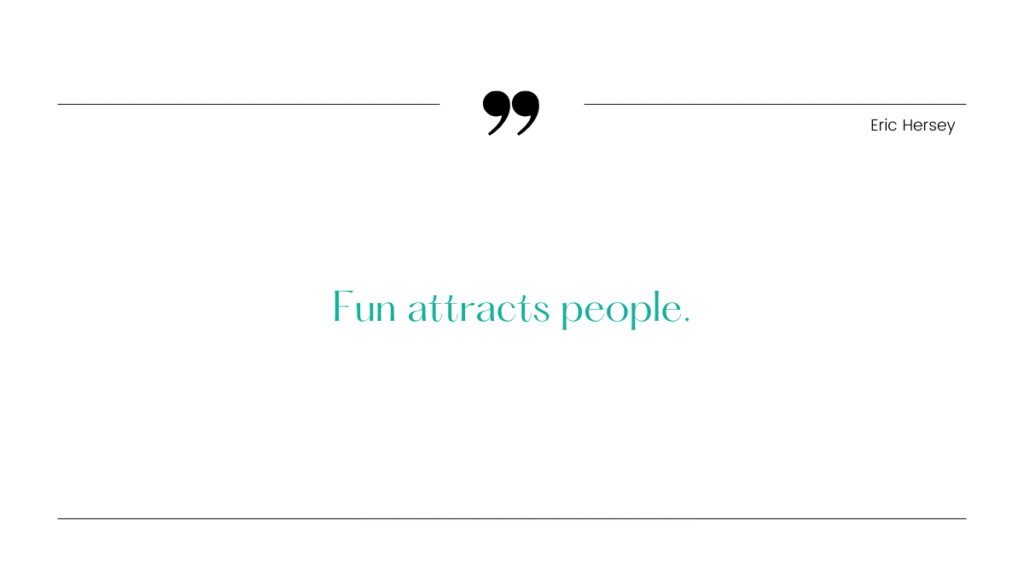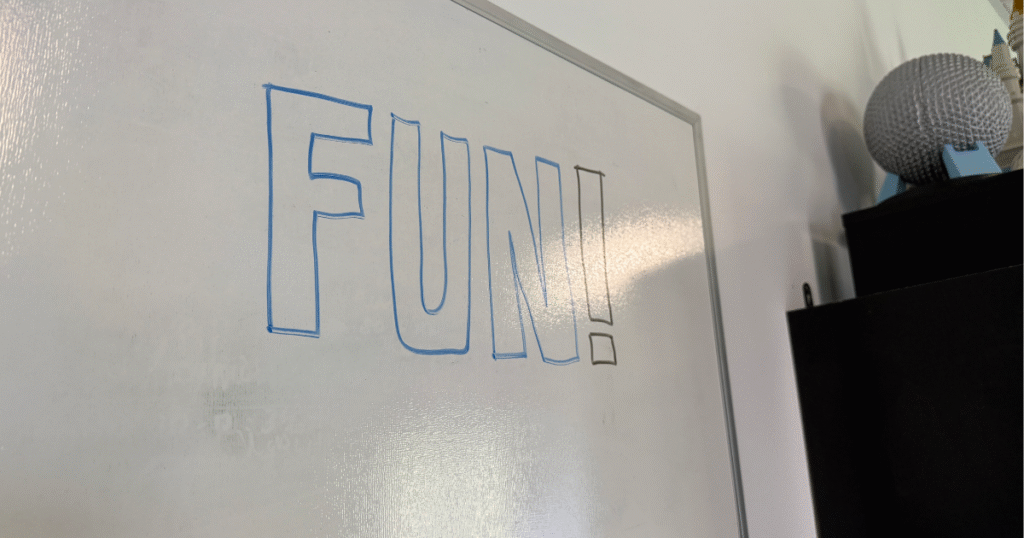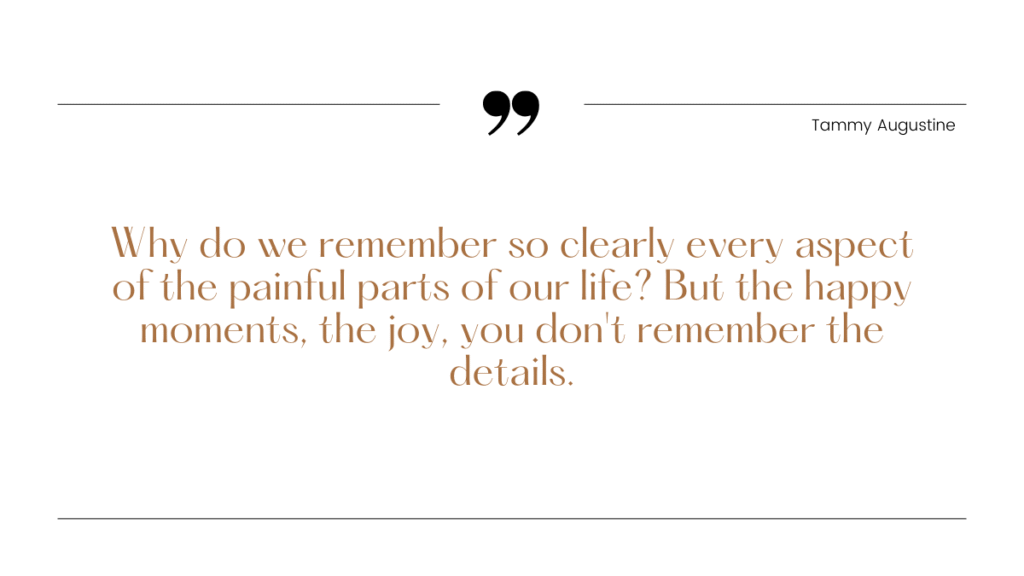In a world where we walk with eyes down, either scanning the ground to avoid eye contact or scrolling on our phones, there’s something beautiful about those rare moments when strangers offer unexpected kindness. Perhaps it’s the extended napkin when you spill a drink, the steadying hand when you stumble off a broken shoe, or the bent knee of one helping to gather scattered papers. Such fleeting intersections between lives reveal our shared humanity. These examples are moments from my life – all of which caught me off guard. Historically, as my former colleagues can attest, if offered help, I’d respond, “I got it” as I sherpa countless items. But these recent unexpected moments of kindness pierced through my carefully cultivated self-sufficiency. Sitting in that restaurant booth drenched, lying on that concrete scratched and scraped or stretching to gather papers embarrassed, I was vulnerable. My instability happened quickly. In accepting the outstretched hand, I gained better balance in my life.
Years ago I was sitting in another restaurant exasperated by the emotions of the day and the events of the week. Disconnected from the person across from me, I felt very alone. While I don’t remember his words, I recall vividly the way they cut me.
Liz
I started to cry pretty hard. We’re sitting in the corner, couldn’t figure out what to do, and just really felt like I was drowning. And you came to the table with what I consider your calm equanimity and your vibration of positive energy. And you just stood next to me, and you saved me. You just held space in the moment so that neither one of us… And maybe because you don’t want to… When somebody walks up to your table, you don’t keep having the conversation you’re having…You just gave us pause.
Tabatha
In the restaurant, I always interrupt conversations, and I try to do it in the most non-abrasive way. Sometimes I come up on hard conversations, and I always reflect back on that stuff, and I just really… I don’t know. I send some energy their way because sometimes it’s really hard to make it through the day. And I don’t know what anybody’s going through, let alone with my energy. So I always try to keep my energy positive and calm because. I am very sensitive to that. And that’s very profound.

I don’t say this lightly. She saved me. That was almost a decade ago and yet I remember it as if it were yesterday.
This exchange between strangers requires us to appreciate stillness amid motion. At that time and for the years that followed, I was fortress-like. I raced through my days, shoulders hunched beneath budgets, deadlines, and demands. My mind ran three conversations ahead and three behind whenever I tried to sleep. A friend said he always thought of the word, fortitude, when he thought of me. Those two words – fortress and fortitude – both have the root word fortis for strength. I saw it as a compliment. I wanted to print the word on a t-shirt and wear it proudly. Truthfully, that supposed strength was nothing but exhausting. If you don’t believe me, think of how easily I was brought to tears in the middle of a restaurant. Have you been there?
I see now the importance of a balanced life where achievement coexists with awareness, where efficiency makes space for empathy. By slowing our pace we develop the receptivity to notice how a stranger’s kindness punctuates our day. Eyes lifted from screens long enough to witness the smile offered across a waiting room, ears attuned enough to hear the genuine question “You ok?” amid the noise in a parking lot, or the presence of someone suddenly standing next to you in a restaurant.
While we think we are charting our individual courses, we navigate life in shared waters. Our actions ripple into the lives of others…and if we are not careful their actions into ours.
Liz
How are you good about leaving their negative energy there at the table and not taking any of it away with you?
Tabatha
I sit in silence for a while in the car. I have a really good partner that also allows me time, and we communicate really well so that if I need more time by myself, he leaves me be. And it’s one of those hard things to learn.
Balance creates white space. Whether it’s the empty areas on a page, the quiet moments in our car, or the pauses in conversation—white space is full of potential. Without margins in our thinking, everything blends together in a noisy mess. But with deliberate empty spaces, patterns emerge that weren’t visible before. Innovation happens. The most important creative insights often appear not when I’m actively working, but in the shower, in the flower garden or …on a walk. Of course I’d include that.
Tabatha learned the pause from her mother. What is the magic?
Tabatha
Just pause and wait. I would always have to with her coming home. And so I learned that way. Because my mom, being an educator, always needed that time. She instantly would come home and start on chores and make dinner and all of that stuff.
Liz
So you actually learned the pause by being the child of someone who used it?
Tabatha
Yes, because I knew that she needed that so much. And yeah, I definitely learned to do that.
Liz
So when I would put Grace and Ella in car seats, when they were really little, I needed the pause. I would always buckle the one who was behind the driver’s seat first and then the other one, because I needed the moment to just take a breath by myself from closing that side car door and walking around to the driver’s side. And you feel guilty because by some definition of motherhood, you’re not supposed to need a break from your kids.
Tabatha
But that’s just malarkey.
Liz
I think we’d all be better off if we learned the pause.
Tabatha
Yeah, I definitely agree.
Liz
Even in conversation, maybe especially in conversation.
Tabatha
Yes, definitely. The reaction to things shouldn’t always be so instant because most of the time it doesn’t come out right, at least in my case.

Taking a pause is about finding balance… and balance is something Tabatha can teach us all. In her unassuming way, Tabatha has mastered what most of us merely aspire to—that elusive equilibrium between doing and being. Watch how she moves through the restaurant with intention rather than urgency, creating pockets of silence between activity.
She understands intuitively what took me decades to glimpse: balance is a continuous recalibration, a thousand tiny adjustments made daily. When Tabatha listens, she listens completely, her attention a gift unwrapped in real time. When she works, she works with focused presence, neither rushing toward completion nor dragging her feet in procrastination. And perhaps most tellingly, when she walks, she notices the world around us that others overlook – a chipmunk, mushrooms, a flower growing between the sidewalk cracks.

It fits then that she wanted to experience even more of life from very new vantage points.
Tabatha
Vinnie and I were seeing different things about traveling, and we really wanted to in a minimalistic way. And we started to look at vans …and finally found one… then COVID hit. And so we were like, “Okay, well, this is cool. We’re going to take this pause and get all of our gear that we need and all of the things that we need to do for the van.”
Oh, a chipmunk. Like the fan, all of our batteries and electric system, the stove, the sink, and just random household things that you wouldn’t think of. I had to get the flooring in, and the soundproofing and the sheep’s wool for insulation. That was fun.
We have a Pro-Master. So a Ram Pro-Master with a high roof.
Liz: So you can stand up inside?
Tabatha: Totally stand up, even with my tall bun. So there’s five, six inches of clearance maybe above me. We can stand up and we can sleep in there, queen-size bed, everything. That was another preparatory thing of getting the mattress and cutting it into pieces so that it can fit in our little bench area.
Liz
So what was the first trip?
Tabatha
Oh, the first trip was… Oh, shoot. We went all the way up to Maine, and did New Hampshire, and did all of that area, Vermont, New York, the Finger Lakes up there.
Liz
I assume that means they announced the Pope because it’s an off time. That is weird. It’s 1:26.
Tabatha
They Must have.
Liz
I just had to mark that. That we can hear that in the background while we’re having this conversation.
Tabatha
We very vaguely map a route, and then do a bunch of research about which hikes or where we want to go and visit. And from there, it’s willy-nilly. So I have crazy lists of all the things that I want to do, and then Vinnie adds to it as well. And then we just revise, condense, and not get too worked up about anything.
Everyone… Oh, mushrooms…everyone has such a cut and dry vacation, and I’m just very thankful to not have that, and we can just wander about and not feel the weight of time restraint, because both of our jobs require quick, quick, quick. You have to hurry, hurry, hurry. And I love whenever I can just relax and not rush.
I understand we all need money to live. We work to pay bills, unfortunately. And I get it. It’s like this never-ending circle of grief, in my opinion.
Liz
Say more about that.
Tabatha
I just feel like so many folks are stressed out that you have to have a lot more money to sustain your lifestyle or a lot more money to do this or buy this. I guess I never really understood that bit of it. Why can’t you just enjoy your job… be frustrated by it certainly, but enjoy it. The weight of money management is so heavy for folks. I just never understood.
I shed all the extra stuff. I definitely have way too many shoes and way too many clothes. Do I need those things? And whenever we moved into the van, because we lived in the van for four years it made me realize I don’t need any of these extra things. My belongings are in the van, and we’re safe. We’re well-fed. I didn’t need all the extra. I don’t need to watch TV every night. I would rather read books, and I would rather sit and meditate. I would rather be outside. And those are the awesome trade offs to what my lifestyle is, and amazing reminders that that’s what I needed. And it definitely fills me up.
Liz
Did you know all of these things about yourself when you set out to do this, or did you learn some of them along the way?
Tabatha
Always learning, for sure. Always learning. I’m very proud of us that we can just roll with it.
Liz
I’m living a gap year, which I never thought I could do. And I had no idea that I needed. But you also can’t, and I’m sure you have to agree with this, you can’t really articulate to someone else what it’s like to make the choice you’re making, because they have a very clear… I call it the treadmill. You’re supposed to do this, then supposed to do that. Did you have that?
Tabatha
Right out of college with an ex that I dated through high school and college… we were supposed to get married. We were supposed to buy the house. We were supposed to have the kids. And I felt all of that.
Liz
And the white fence?
Tabatha
Yeah, absolutely. Absolutely. Life ends.
Liz
No, I said the white fence. But you’re right, too.
Tabatha
But that’s what it felt like for me. It was like, then my life ends because I was supposed to do X, Y, Z, and the white fence. I didn’t like that feeling. And I asked myself, why does it feel like that for me? Obviously, it’s not going to serve me and make me happy for the rest of my life. And I definitely felt that. For sure. But thankfully, I listened to myself and found people in yoga and surrounded myself with different ideas. And it was lovely. It took a while to come out of it.
So many of us have become captive to life’s relentless treadmill—running faster and faster, hearts pounding, breath shallow, going nowhere while digital dashboards track our supposed progress and clock our steps, but leave us right where we started. Tabatha regularly steps off that mechanized march to wander forest paths where time is measured by shifting shadows and bird calls rather than notification pings. She still has goals of “doing a fourteener in Colorado.” She is not without ambition. But the pause she takes gives her greater purpose. She has learned that there’s more wisdom in a single hour of moving at nature’s pace—feet meeting earth—than in days spent sprinting on civilization’s conveyor belt chasing an elusive carrot.
From Tabatha, we learn that balance requires courage—the courage to recognize our limits without shame, to sit with discomfort and learn from it, to leave spaces unfilled and questions unanswered, at least for a time. In a culture that glorifies perpetual motion, Tabatha’s balanced minimalist approach feels almost revolutionary—a quiet rebellion against the tyranny of too much.
Liz
So the van is a she. Does she have a name?
Tabatha
Iris.
Liz
Iris. Why is she Iris?
Tabatha
I don’t know, to be honest. Whenever I think of that and how it happened, I think of my grandma, my dad’s mom. But I don’t know why I decided on Iris. It was my decision. Vin supported it. But yeah, I don’t know why. It just felt right.
Liz
You glossed over whenever that happened, I think of my grandma. What do you mean?
Tabatha
She just always had so many wild flowers, or I think she had hydrangeas, and she had irises, and they were big and just always reminded me of new beginnings because they don’t last very long, right?
But my grandma Hawthorn, she was a super strong lady and got a divorce when the divorce was not okay. So I don’t know, strength, maybe. The strength of that.
The strength to start over. The courage to continually recalibrate to keep your balance. The decision to leave room for white space in your day …or in Tabatha’s case months of white space… or in my case a year of it. Afterall, where are we rushing to? The finish lines we sprint toward keep dissolving the moment we reach them, replaced instantly by new urgencies, new deadlines, new versions of success that shimmer just beyond our grasp.
Tabatha
I feel like people rush through so many things in life just to get through it. And I don’t like that at all. It makes me really sad, to be honest.
Liz
I have found a trend that I wanted to walk with people who I realized are just pure light, and you’re a part of that.
I held on to that stranger whose kindness offered me a glimpse of the best of humanity. She is truly the embodiment of pure light. And I will forever appreciate our shared white space.




















